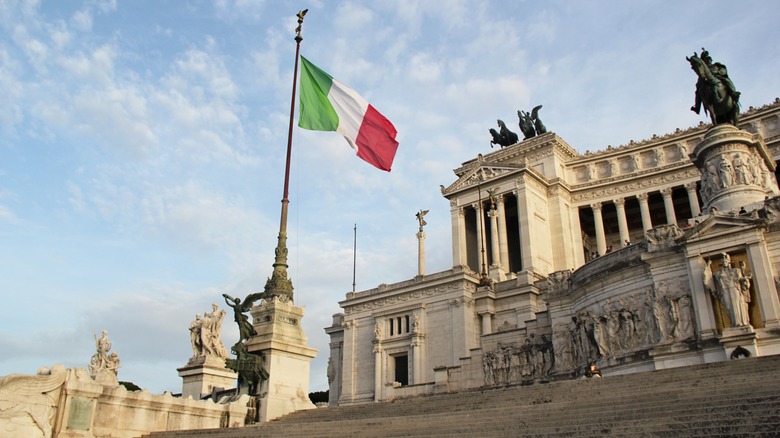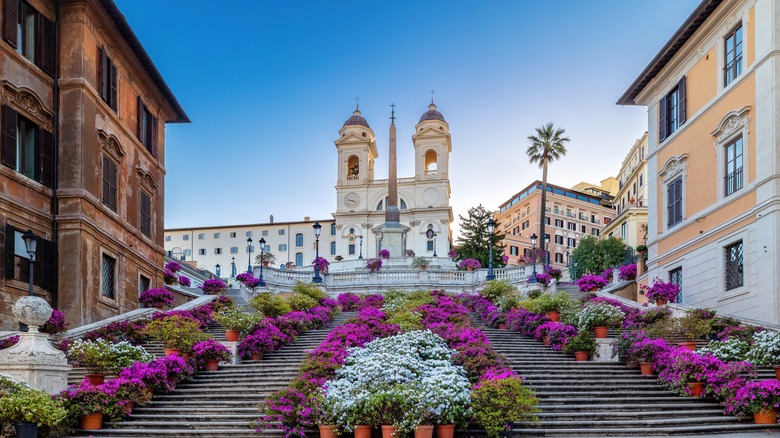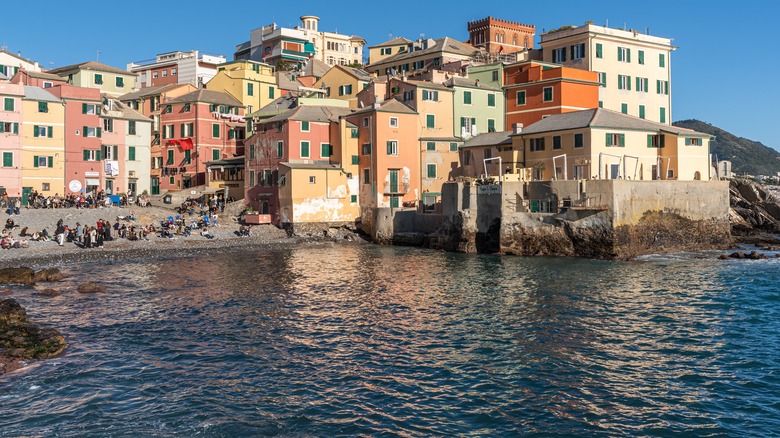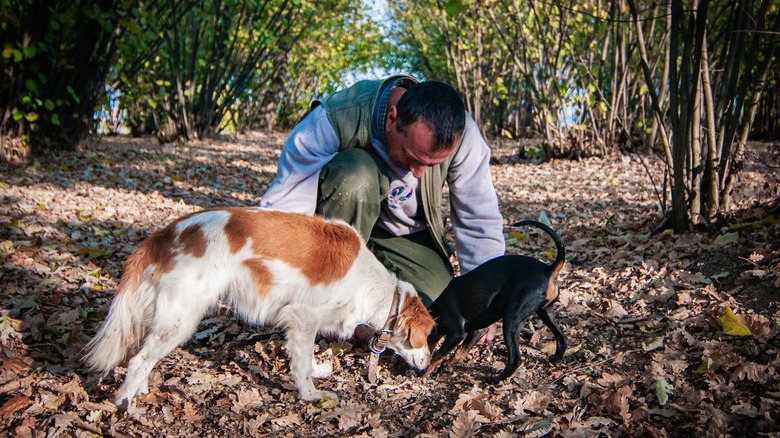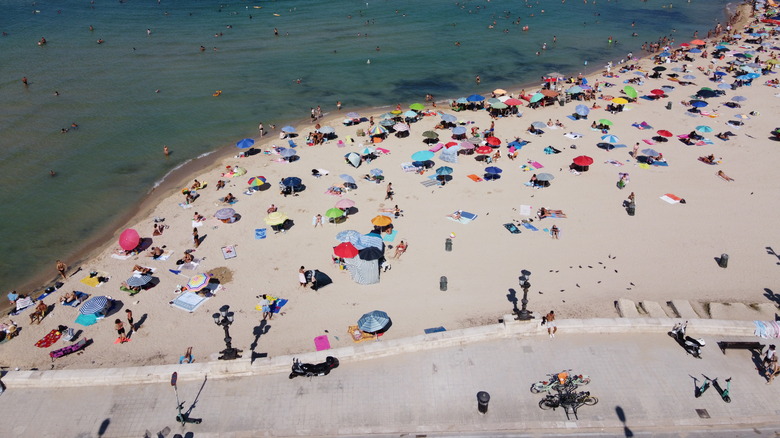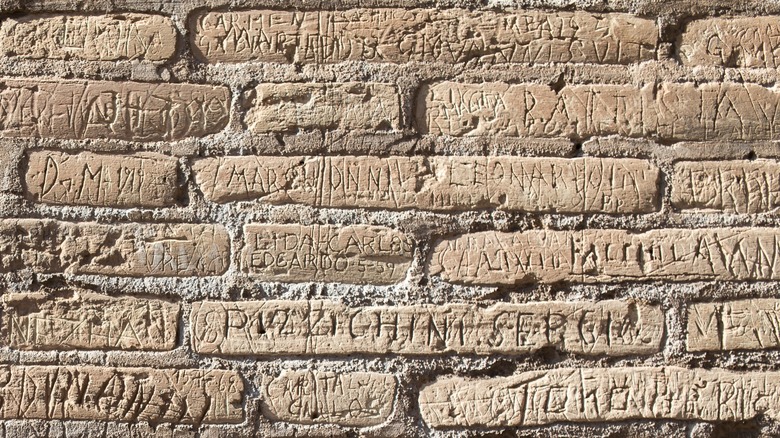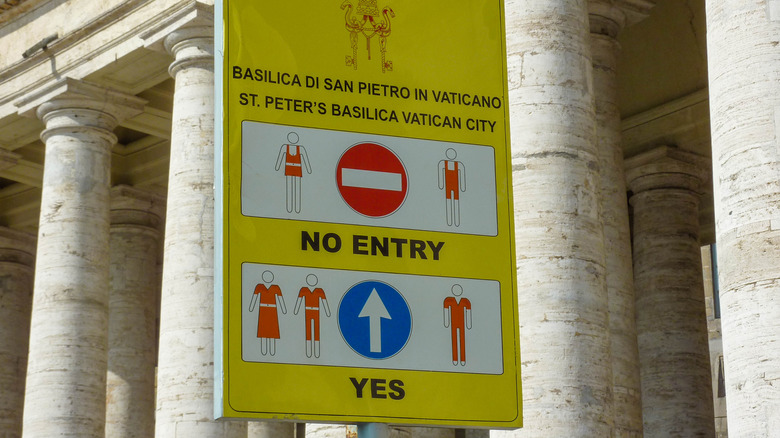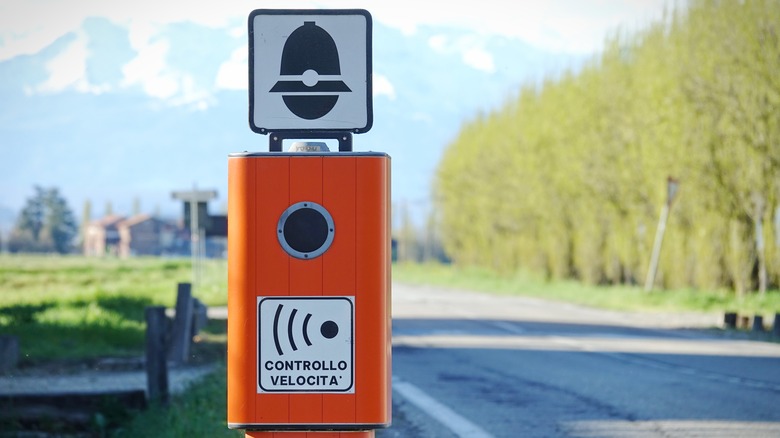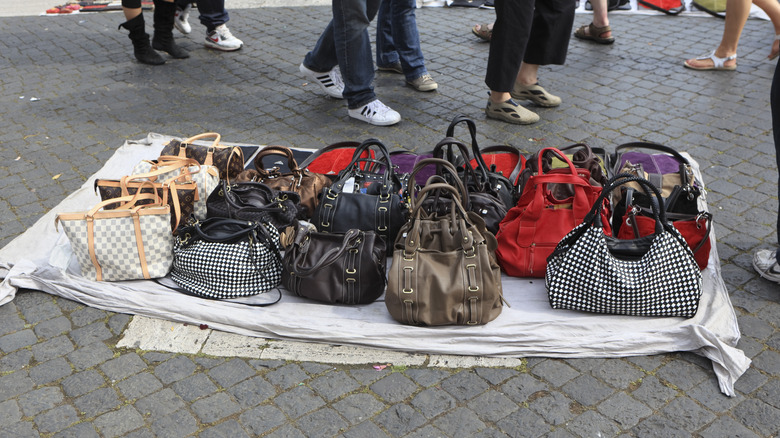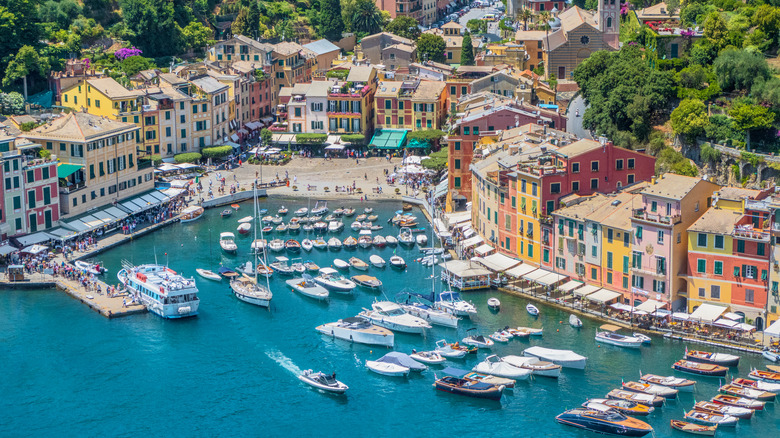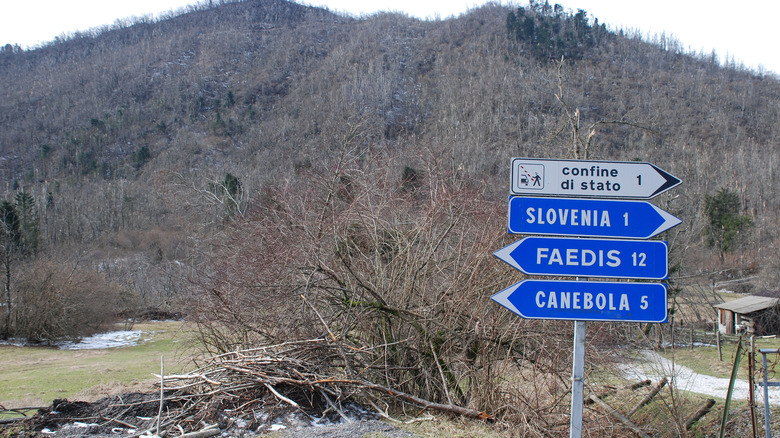Unusual Things That Will Get You Fined In Italy
We may receive a commission on purchases made from links.
No one wants to receive a fine on vacation, especially in a high-cost country like Italy, where as a tourist you're already paying a premium for the pleasure of visiting its world-famous historical sites.
Italian fines can catch Americans by surprise. There's a lot of them, especially for so-called "victimless crimes." But try seeing it from the Italian point of view: One tourist sitting on the Spanish Steps or dragging a suitcase down them isn't a big deal. But millions of tourists doing the same are going to wear them down. A young tourist taking a sexy picture with a statue may seem at worst, trashy, but in Catholic Italy, it's a heavy fine for public indecency. There are other situations that seem downright harsh, but the rule of "their country, their laws" applies, even if you don't like them.
So for tourists not only trying to avoid all the overrun Italian tourist traps, but also recieving a fine on vacation, here are some of the things that can land visitors in hot water. Fortunately, they are mostly common sense and can be easily avoided.
Loitering on the Spanish steps
While the claim that Venice was going to ban wheeled suitcases turned out to be a misunderstanding, in Rome, the authorities are deadly serious about that — at least when it comes to sitting down on the Spanish Steps. The 136 marble steps that lead down from the Church of Trinita dei Monti to Piazza di Spagna are one of the biggest tourist attractions, and people for some reason really love to sit on them. So in response, Rome slapped a ban on wheeled suitcases at the Spanish Steps, since thousands of tourists' bags no doubt would degrade and dirty the marble. According to Italy Magazine, this also applies to any historical site that has stairs, which in theory, means most churches or palazzi in the city – and there are a lot of those. Loitering will also get you fined of up to $448. But the regulations don't stop there. If you eat on the steps — or near any other historical site — and are deemed to be too messy, that is also a fine. There's way too many things to do in Rome besides loiter on the Spanish Steps, anyway.
Remember, fines also take into account damage repair and cleanup costs, so if you really make a mess that requires restoration to artwork or a monument, the city has to pay someone for that and will pass the cost to you.
Flying drones
Using a drone may give you a better view of tourist sites, but it can cost you your wallet dearly. Italian drone laws are legion, chief of which is a total ban on them being flown in places where there are large crowds. So if you're going to a major city, leave the drone at home because you could lose that and more.
If, for whatever reason, you decide not to follow this advice, consider yourself warned. Fines depend on the severity of the offense and several factors, including whether the drone was over a certain weight (thus requiring insurance, a license, and documentation), and whether any private property or cultural heritage was hit/damaged. There are also security and terror considerations if the drone is flown near sensitive areas like military installations or airports. One Polish tourist faced up to 30,000 euros in fines for flying a drone that crashed on the roof of the church in Genoa's Boccadasse neighborhood. The authorities also confiscated his drone for lacking documentation and insurance (implying it was a bigger, more expensive drone), so on paper, the guy was looking at a ~$40,000 hole in his pocket.
For drone enthusiasts, Italian law is pretty permissive when flying outside of urban centers. Anything under 55 lbs doesn't need a license, and as long as you respect private property, local regulations, and keep the drone in your sight, fly to your heart's content.
Picking mushrooms without a permit
For culinary aficionados and off-the-beaten-path tourists, mushroom picking (aka being a "funghaiolo") is a can't-miss activity that has traditionally been part of Italian country life. Just have all your documentation in order because mushrooms are an Italian culinary and cultural treasure whose harvesting is tightly regulated to prevent over-harvesting and ecological damage.
Italian regulations for mushroom picking vary by region, but generally you need some sort of permit (called a "tesserino"). Article 20 of the laws of the region of Molise, for instance, will fine you up to 600 euros and confiscate your haul if you don't have it. There are also per-person limits on the amount of mushrooms you can pick, with similar fines for exceeding them.
If you are picking truffles, there are often separate laws for those, too. Not only will not having the permit land you a fine, so will truffle hunting without a dog, using more than two dogs collecting out of season, and picking truffles apart from those authorized in other laws. The initial fines for these violations (region-dependent) go up to 1,500 euros for first-time offenders, 3,000 for repeat offenders, with the maximum penalty being a lifetime ban. So tourists wishing to pick mushrooms should check regional laws, or even better — since chances are you won't know enough Italian to read through dense legalese — go with a tour operator (e.g. Viator) or locals already familiar with the rules and can get them set up with the right paperwork.
Wearing bathing suits outside beaches
In the United States, it is generally not against the law to go around shirtless or in a bathing suit, with a few state-specific exceptions. It's quite normal to see women and men sunbathing in bikinis and bathing suits in city parks during the summer. In Italy, where people take pride in dressing well, it's another story.
Italian municipalities have been cracking down on inappropriate public dress and bad behavior that accompanies it — people tend to behave how they're dressed — with heavy fines. News outlet "Il Giornale" lists places from Sorrento in Campania, Praia a Mare in Calabria, a handful of localities on the island of Sardinia, and even the city of Milan. Generally, they fine people up to 500 euros for wearing bathing suits (or in Milan's case, toplessness for both sexes) outside of beach areas.
While the fines may seem harsh to more liberally minded Americans, it is worth remembering that while Italy is not the most religious country in the world, it is still very culturally Catholic, meaning Catholic behavioral norms still influence public morality. The president of Milan's Parco Nord told "Il Giornale" that it's one thing to go topless or in a bikini on the beach. But there's a time and place for that and it's certainly not in a public park or in front of the city's cathedral in Piazza del Duomo.
Writing your name on monuments
You destroy statues, throw paint at paintings, or muck up a fountain, you're getting prosecuted for vandalizing cultural heritage. That's a no-brainer. What tourists forget is that seemingly harmless activities also fall under this category.
Carving one's name into monuments – the kind of stuff young couples find cute — is both a time-honored tradition and a seemingly harmless activity. Ancient Roman tourists did it in places like the Egyptian pyramids 2,000 years ago. Modern Italians, however, don't like it and police will hit violators with fines greater than most millennial tourists' net worth — just ask the Russian guy who was out 20,000 euros over this. He got lucky, too, because in 2024, it can go up to 65,000 euros. And don't take home pieces of monuments, no matter how small, lest you get fined and possibly arrested for theft of national heritage.
Finally, there is the issue of public urination. In 2017, a tourist got the then-maximum penalty of 10,000 euros for urinating on the outside of Florence's Loggia dei Lanzi. In 2022, however, Italy's top court ruled that such high fines for public urination were excessive and reduced the general penalty to under 400 euros. It is unclear, though, whether this reduced penalty applies when cultural heritage is involved, since such vandalism carries much steeper penalties. So, if you have an emergency, play it safe, buy a coffee at one of Italy's ubiquitous cafes and go there. Better to be out three euros than hundreds ... or tens of thousands.
Public indecency
Photographing yourself baring your behind in front of a Sicilian cathedral is public indecency. In 2021, an Italian porn star did just that in Noto and deservedly earned himself a 10,000 euro fine. Most tourists probably won't be doing that, but other seemingly victimless acts that appear "cute" or funny for the Insta can land you and your wallet in trouble. Anything that is considered suggestive of sex falls under this category.
The example that dominated the media occurred in 2018, in which a young, drunk woman went up to a statue of the Roman god Bacchus in Florence and pretended to kiss the statue, humped it, and twerked on it. In terms of obscenity, her antics were probably on par with what one can see at American parades and high school dances. But the Italian authorities saw it differently, threatening hefty fines for desecrating cultural heritage and public indecency plus a lifetime ban from the city for her or any potential copycats. It appears she only escaped consequences because authorities never identified her.
So, if you're taking a picture of yourself looking cute, no problem (churches excepted). But as soon as the pic becomes suggestive of something reserved for the bedroom, stop and ask yourself if the social media clicks will be worth it when the judge hands you that fine. And even if you don't get caught, it's still tacky.
Going one mile over the speed limit
Getting around Italy's smaller, less touristy towns and villages requires a car. But be aware: Speed cameras are ubiquitous on Italy's highways and cities. Although 2024 saw laws passed to curb abuses, speeding will still land you a nasty surprise in the mail — even for going one kilometer (.6 miles) over the speed limit. Speeding up to 10 km (6.2 miles) over the limit (what most tourists who get tickets will likely face) will get a fine anywhere between 42 and 173 euros.
Fortunately, speeding fines are easy to avoid: just don't speed. Given the limit in towns and cities is 50 km/hr (30 mph), American tourists driving automatics might find it a little taxing not to hit the gas, in which case, renting a manual car and keeping it in second or third gear is a good choice. On highways, the upper limit is 130 km/hr (80 mph), but can be lower depending on conditions. Cruise control is a good way to avoid speeding here. Combined with a built-in GPS navigator that warns you when approaching speed traps, you should have no issues. There must be a 1 km warning before a speed trap, giving plenty of time to adjust speeds before passing them.
When driving in cities, be aware of the ZTL (zona di traffico limitato). These areas are to keep vehicle congestion out of city centers, so only residents' cars are allowed with a special pass. They are not always clearly marked, but the sign looks like this. Fines for violating the ZTL can go up to 332 euros.
Buying counterfeit goods
This one may seem harsh, since it almost seems like punishing a tourist for someone else's crime, but there is a rationale behind it. Rome might be one of the most romantic places in Italy, but it has also seen the proliferation of sketchy souvenir shops and street vendors selling cheap "designer" items. For young, cash-strapped tourists, it's tempting. But there are many reasons not to buy, chief among them, fines ranging from 100 to 7,000 euros.
Buying counterfeit goods seems like a victimless crime — the only victim is technically the tourist who bought it. But cheap knock-offs have real consequences for local Italians. Most of these souvenir shops that specialize in counterfeits are operated by foreign organized crime and staffed with trafficked migrants mostly from Bangladesh. Patronizing these shops enriches organized crime and promotes human smuggling. For local businesses, whether in Rome, Florence, or Milan, every purchase of knock-off designer items is a lost customer for a legitimate Italian-owned outlet that, unlike these illegal businesses, follows regulations and pays Italy's sky-high taxes. Thus, legitimate outlets go under and are replaced with more sketchy souvenir shops, which turns neighborhoods into hotbeds of criminal activity. Local residents are then left to deal with the consequences.
The moral of the story is don't be cheap. Spend the extra money and buy the real thing at a legit outlet. It's the right thing to do, and it's money better spent than handing the Italian government a massive fine that could've bought you multiple designer items.
Photography inside the Sistine Chapel
When visiting the Vatican, there are a number of rules tourists should remember regarding photos. In the Vatican, non-flash photos (they damage frescoes) are permitted as long as there are no selfie sticks, tripods, stands, or any other equipment that requires setup. The photos must also be for personal use only. The one exception is the Sistine Chapel where photography is completely forbidden.
Now, you might object, noting Russell Crowe took pictures of the Sistine Chapel with no consequences. That's true, but you're not Russell Crowe and you probably don't have a special, private tour where you practically get the place to yourself. If you do what Russell Crowe did and the Swiss Guards or curators catch you, you potentially face a 200 euro minimum fine and confiscation of the camera or phone you used.
The ban today is mostly meant to protect the frescoes from flash photography, but when it was originally passed in the 1980s, it was about copyright. The Vatican needed money for restoration, and Japan's NTV offered them money in return for exclusive photo and video rights that expired in 1990. Although Nippon TV claimed it never intended it to apply to private photos, that explanation won't save you if the guards choose to enforce the rules. So be respectful and don't do it.
Selfies in Portofino
This one only applies for those visiting Portofino, a town on the Italian Riviera in the Liguria region up north, and one of the best day trips from Cinque Terre. Selfie culture has become the bane of Italian tourism workers and locals, who have to deal with locals blocking roads and major sites just to get that perfect instagram-worthy selfie. In the small town of Portofino, things got so bad that the mayor decided to create waiting-free zones near the waterfront between the hours of 10:30 a.m. and 6:30 p.m. Under this rule, which requires foot traffic to keep flowing on the waterfront, stopping and congregating for selfies — or any other reason, for that matter — will get you a 300 euro fine.
Admittedly, the policy seems harsh and short-sighted, at least at first glance, especially since the town basically lives off tourism. But Portofino's population is a mere 400, and given Italy's demographics, most of those are likely elderly. In comparison, the town can see up to 10,000 tourists during the summer months. Imagine being an elderly local needing to get through town but having to deal with a line of people blocking a road to take a selfie. Your best bet is to just forgo the selfies, regardless of whether or not there is a ban in place. Italians are friendly and are happy to take your picture, as will other tourists. Just make sure there are no soldiers or police in the background, because that's illegal too.
Crossing into Slovenia by car
There's a lot to see in northeastern Italy, from the Hapsburg gem of Trieste to the Dolomite Mountains. But if there is any chance you're going to be near the Slovenian border and think you might end up crossing, buy a vinjeta sticker at a local gas station or its electronic equivalent online.
Slovenia requires drivers to affix the vinjeta to the windshield to show they've paid the highway toll tax. However, Slovenia does not tell people at the border they need it — at least not in English — and because there are usually no border controls due to the EU's Schengen Agreement, there is no official checkpoint telling tourists to buy it before entering. So if you enter Slovenia on a highway – by accident or otherwise – without knowing you need the vinjeta and enter a toll zone, you're in for fines ranging from 300 to 800 euros.
If you get fined, don't argue. The police don't care about your explanations — vinjeta fines are a moneymaker and the police have every reason to make you pay. The best they can do is halve the fine if you pay on the spot, so if you are stopped, it's in your best interest to take it and move on. And hey, Slovenia is one of the most beautiful and overlooked countries in Europe, so it's even worth getting the vinjeta and crossing the border.
